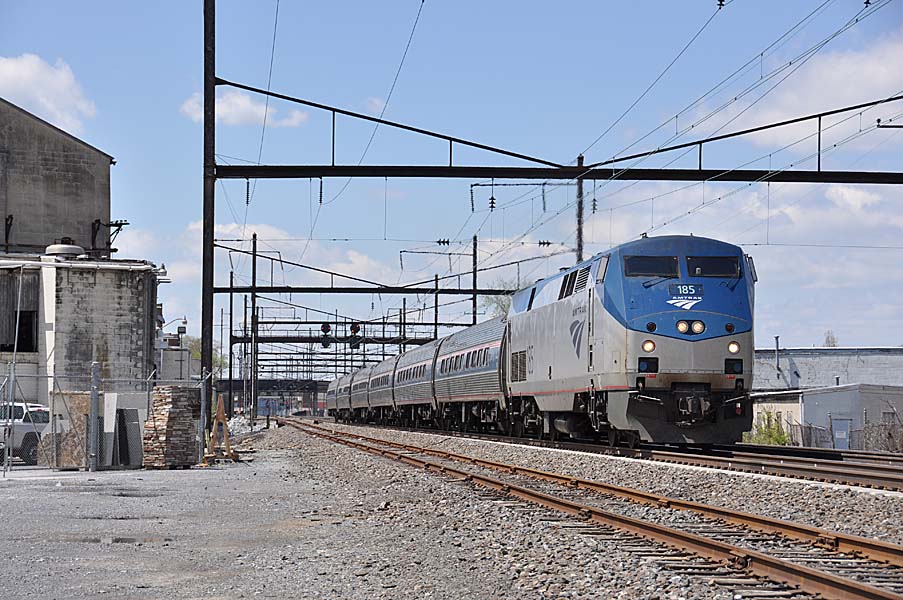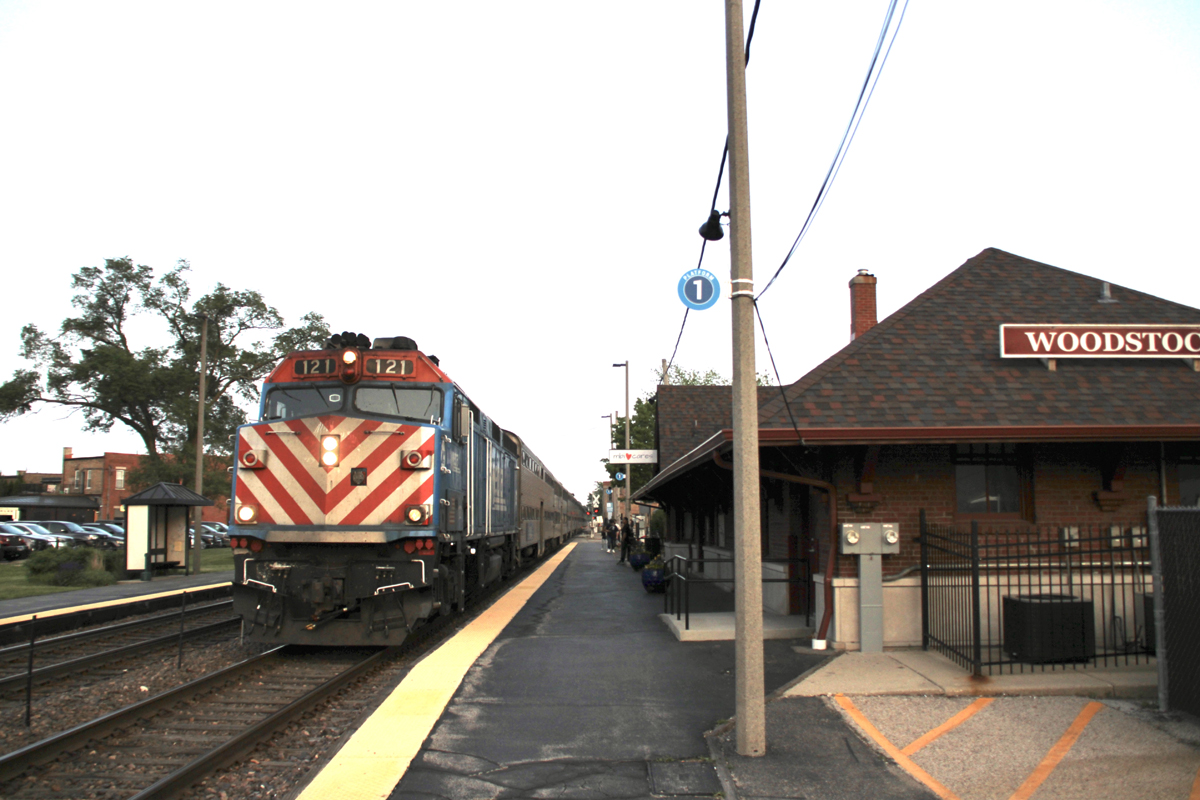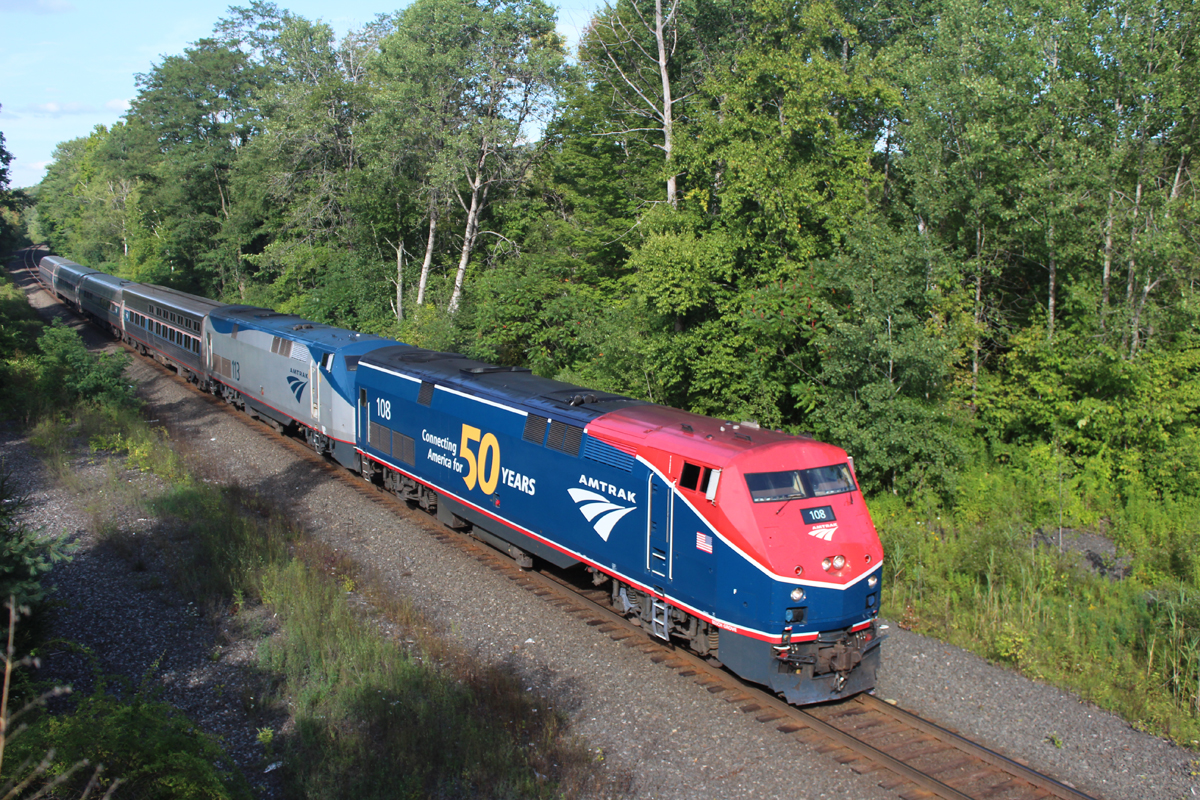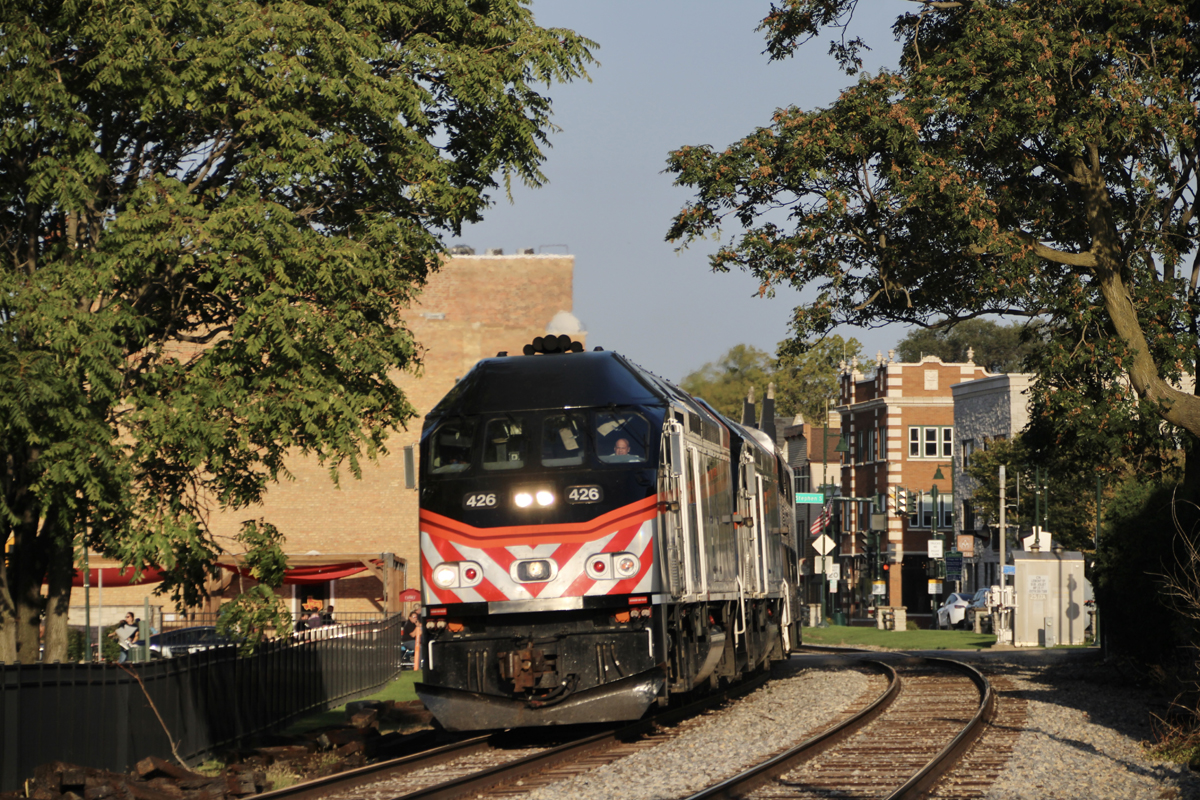
PITTSBURGH — Norfolk Southern and the state of Pennsylvania are finalizing an agreement for up to $170.8 million in infrastructure improvements that will allow a second daily Amtrak train between Pittsburgh and Harrisburg, a route currently served by the Pittsburgh-New York Pennsylvanian.
The Pittsburgh Post-Gazette reports the deal was announced at a Friday press conference including Federal Railroad Administration Administrator Amit Bose, Pennsylvania Gov. Tom Wolf, other elected officials, and representatives of the railroad and state Department of Transportation.
The funds will pay for improvements at yards in Pittsburgh, Johnstown, Portage, Altoona, and Harrisburg, creating more space for freight trains to clear the main line for passenger trains to pass. The state will pay for the improvements with money it had been saving to buy new passenger rolling stock, money that has been freed up for use elsewhere because federal infrastructure funding will pay for new Amtrak equipment.
While a state panel had estimated service could start within three years, Friday’s announcement said it could take up to five years to complete the improvements. PennDOT official Jennie Louwerse said the more conservative estimate was to make sure everything in place before service begins.
Work will begin as soon as the state and NS complete an operating agreement covering all details. That should be done by June, Louwerse said.
“NS has had an outstanding partnership with PennDOT over the years, and we hope to be successful adding a second round-trip passenger train between Harrisburg and Pittsburgh,” Mike McClellan, NS senior vice president & chief strategy officer, said in a press release from Wolf’s office. “Many critical issues must be resolved before this new service becomes a reality, including the preservation of our ability to serve present and future freight customers, which translates directly to jobs and economic development opportunities in Pennsylvania.”













When Hasselman and company were running Conrail, this line ran like a Swiss watch, and could easily have accommodated another Amtrak train without breaking a sweat. These bungling idiots often can’t get their own trains over the division without one and sometimes two crew change, thanks to PSR, Auto Router, and Trip Optimizer. More fixation on the OR and fuel “savings”. Bah!
Agreed. Conrail ran a tight ship and manifest traffic ran with the pack – a high speed operation. Things devolved soon after NS stepped in with a comparative case of the “slows”. Nor do I see any need for all of the investment suggested, other than a ride on the gravy train. Two or more new train sets, perhaps an additional passing track here and there. On the railroad’s side, Amtrak decided to drastically cut service upon its inception and a company can hardly be expected to maintain surplus capacity for some future possibility. Yet it seems many railroads have elected to sacrifice capacity through their dubious economizations and have rendered the situation unable to accommodate their own business expeditiously, much less additional and, theoretically, time-sensitive traffic. It’s a good thing money is so easy to print, ad infinitum.
Per Ron Mele and James Shigley, above, for an extra train pair a day it sure seems uh, puzzling. I’d really like to see what the details are on these improvements as “anyone” visiting trackside can see the capacity that is already there. I suppose NS will want to stow the freights somewhere, anywhere, there might be a need and add more crossovers. We know the ROW is there already from the Pennsy era if more trackage is needed. Obviously we are decades past the glory days of track capacity but geez.
On the other hand, Pennsylvania has certainly put its money into passenger rail over the decades and we should give them credit for continuing onwards.
Let’s keep in mind that the cost of many things is very high compared to decades ago when we were all young. Fighter jets and commercial airliners now on a per-unit basis cost many tens of millions of dollars; the Boeing 737 Max 7 carries a list price of $99.7 million and the Lockheed USAF F35 now as a price of about $80m as the number of planes ordered increases, the overall life-time cost of the F35 program is $1.6 trillion. Maybe the price is too high for just one more frequency, but not has much as one would think looking at other rail projects.
“…five years…” to add a 2nd frequency. Mind blown……
To those bemoaning the cost and time to get this in place – it’s the government. Nuff said.
No, it is not the government. It is Norfolk Southern, a private company, demanding these changes.
And it’s the Commonwealth of Pennsylvania that agreed to the shakedown. Ey?
I fail to see how one more passenger train a day each way requires 170.8 million dollars in infrastructure improvements and five years to accomplish. The Norfolk Southern between Harrisburg and Pittsburg is a well maintained double and triple track railroad with numerous crossovers.
gize; 1. The money is from the Federal Government . Is this a political payment for future considerations/ 2. I do think this is not a clear victory for anyone. 3. Five years is unreasonable, when UP can replace a burnt trestle in several weeks. 4. This shows us how inflexible PSR has made the railroad mode. 5. From where will the operating equipment come? The article notes the track improvements were originally to be spent for new equipment (for existing service, I assume). Blessings,
Look what Brightline has accomplished in a short time and with reasonable expenditures on the upgrade from W. Palm to Orlando, which is now 73% complete. Trains should run first quarter, 2023. And FEC is a busy freight line between Cocoa and W. Palm. But a train an hour vs. two trains a day for 170+million.
God only knows how things would go if Brightline management ran Amtrak.
All the commentaries are quite interesting.
I too am at first “outraged” that so much money and partticularly time will be needed to possibly restore a second frequency when such a frequency existed not too long ago and their used to be multiple frequencies– although that was many years ago. Societal expectations and technology have changed quite a bit and it is defintely not the same world
Indeed, the government at all levels has spent billions to support other modes of transportation– supposedly for the public interest. In Pennsylvania alone it has built or put the money up front for at least two interstate highways east-west across all of the state (Turnpike and I-80), so why should not the government spend hundreds of millions to update a railroad to increase passenger service. This investment is certainly a lot less then building an entirely new railroad and improving freight flow potentially also has a public benefit.
1. I think of the four track PRR, gutted by PennCentral and Conrail. 2. I think of the huge classification yard that once existed in Altoona, which still has extensive tracks for the helper engines. 3. Portage and Cresson had (and probably still have) helper tracks, certainly had (and probably still do, because Corman took over those tracks) classification yards for traffic off the coal district yard. 4. I know Johnstown, Harrisburg, and Pittsburgh have plenty of yard space (think Pitcairn, Conway, Rutherford, Enola, and Conemaugh). 5. Norfolk Southern runs plenty of traffic but not like the PRR did and certainly there still are long periods without freight running through.
The merits of adding a second Harrisburg-Pittsburgh train aside, I find it amusing that so much money has to be spent to add track capacity for a second train. Any fan of the Pennsylvania Railroad knows the overwhelming volume of passenger and freight traffic they once handled. Granted, the track infrastructure has been reduced from the PRR days. But NS still has a superb
double track railroad, over relatively flat terrain, between Harrisburg and Altoona. And three mains still exist between Altoona and Pittsburgh taking the Conemaugh Line into account. Bottom line, in spite of any public posturing, I imagine NS and CSX would rather not have to deal with passenger trains at all.
Seems like a positive development–perhaps announcement tied to curry favor with the STB hearing the Mobile case so the result is not too punitive for the Class 1s–which decision could be given the outrageous claims being pushed by CSX, NS and the Port.
Hopefully this comes to fruition sooner than 5 years–and one can dream–leads to a restoration of a Broadway all the way to Chicago.
STEVEN — A better question is, Why in God’s name was the Broadway ever dropped? It’s as logical a route as any of the LDs.
In the last half century, the Eastern freight reailroads have done everything possible to reduce capacity on their main lines. Now they turn to the passenger train advocates to fund getting capacity back. Yeah, what’s $170.8 Million when the freight railroads can duplicate that corporate welfare on every maine line Miami to Vancouver, Maine to Los Angeles?
Heck three to five years from now politics will probably kill this. Even after the money’s been spent. Can’t plan long term anymore in a politically divisive subject like passenger trains in America.
$170.8 million and five years to add one additional round trip to a double track railroad?
My exact sentiment Robert, seems like a long time to me.
MARK SHAPP – I’m with you, I’m glad this is settled. But was it a settlement or was it highway robbery? What concerns me is the cost. $170.8 million dollars. I realize all passenger trains worldwide are subsidized — which I don’t have a problem with. Subsidies are one thing, but there has to be some reasoable fraction of the combined operating and capital recovery costs coming out of ticket sales. If the second train covers a half or a third or a quarter of its daily operating costs out of ticket revenue, none of it goes toward that $170.8 million.
I’ve always been an advocate of multiple frequencies on the LDs, but for this price? Imagine if frequencies on all Amtrak LD trains nationwide doubled or tripled, which is a worthy goal to strive for. How the heck much money would go into the pockets of the freight railroads?
Some difference between this and “The Second Battle of Mobile Bay” (title of 2/15 column by Railway Age Senior Editor William Vantuono) playing out before the STB.
Agreed. I noticed NS, and others, arguing that collaboration (like this) is better than Amtrak’s demanding access, and part of me wonders if the timing of this announcement was meant to highlight that. Then again, I noticed Pennsylvania, not Amtrak, seems to be the main partner here. And of course, CSX, not NS, is the main host railroad down south.
Agreed. NS here has a double track railroad the whole way (three tracks on the Mountain) and PA and NS have agreed to add third tracks here and there for freight trains to duck in.
By contrast, CSX has reduced the capacity of its line down South by operating 200-car trains without enlarging any siding to accommodate such a train. Meets with passenger trains must be saw-bys, if anybody remembers how to do one.
A running mate to the Daily Pennsylvanian will be welcome with a schedule not tied to AMTK 29-30 (and a looong wait in a plastic chair in Pittsburgh)